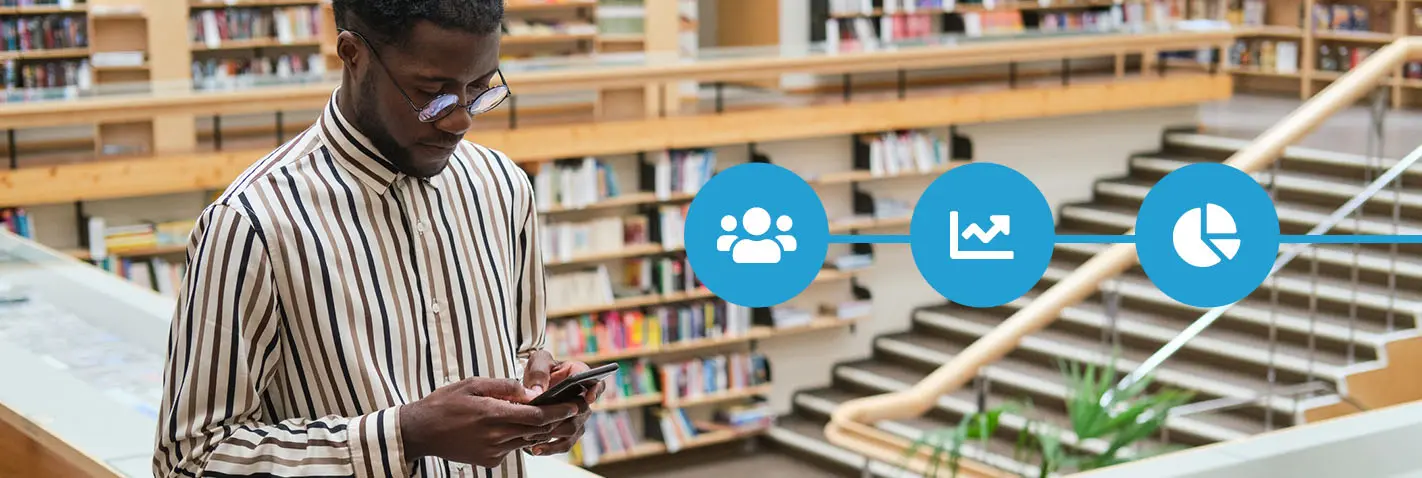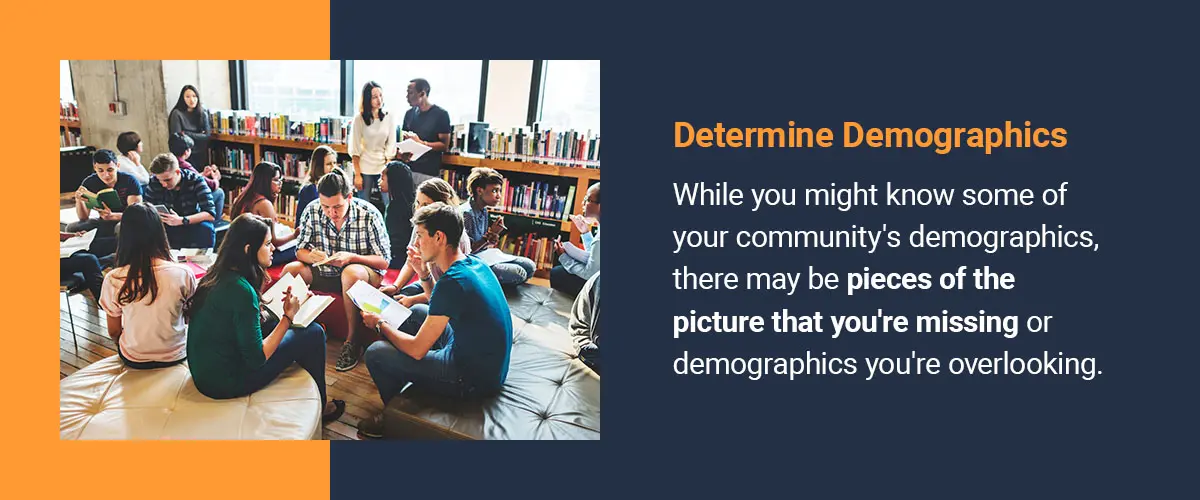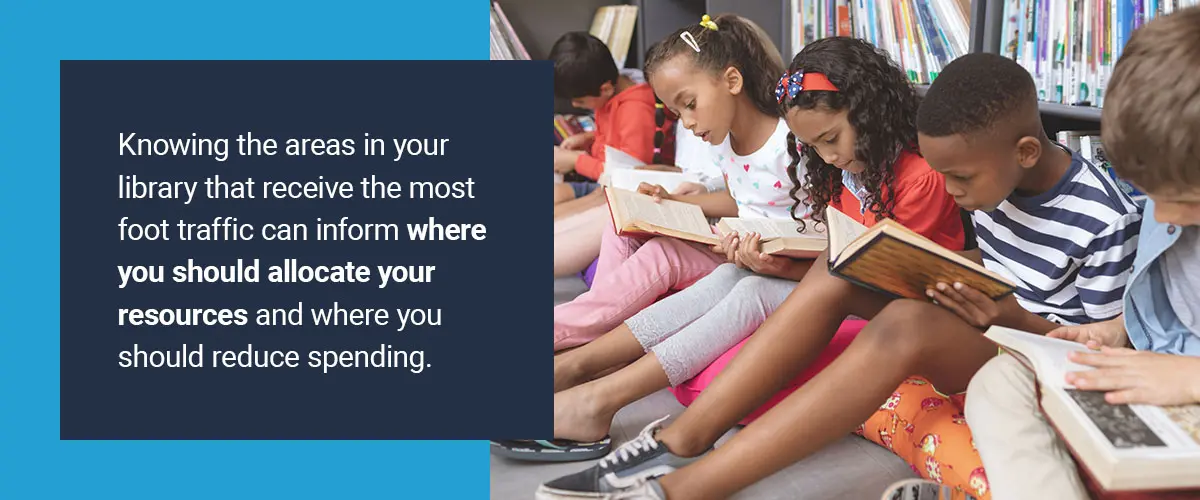
When it comes to data collection in a public library, you should start with the data your library already collects and understand how you can use it to improve your facility.
Data collection is essential in any industry, and libraries are no exception. While libraries can easily provide data from existing systems, this data is mainly about services used and does not equate to patron numbers. For example, the number of books checked out does not equal the number of patrons who used the facility. This is where data from people tracking systems comes in.
It isn’t enough to simply collect data from public libraries. Library staff should also know how to analyze and leverage this data to enhance the experience and draw in more visitors. You can use the data from your people tracking system in several ways to improve your library, such as:
One of the ways you can use the data from your people tracking system to improve your library is by determining the demographics of your patrons. While you might know some of your community’s demographics, there may be pieces of the picture that you’re missing or demographics you’re overlooking. With people counters, you can get a more comprehensive view of your patrons.
You may also want to use public sources to learn more about your community demographics. For example, you can compare your patrons’ addresses with the addresses in your library’s service area to analyze how much of your community you are serving. You can also access or request information from county or city government agencies to tap into geographic and demographic data.

Learn more about what your patrons want or need by determining what they use the most. Use simple tools to poll your library’s patrons and members of your community to identify what they want from your facility. For instance, you can use social media to gather helpful feedback on the types of activities, media and programs your community desires.
In a community of retired adults, you may want to favor titles that appeal to an older population. If your community is composed of young, busy families, you may want to incorporate more children’s literature in your audiobook collection that these families can enjoy at home. Use the data you gather from social polling and other surveying methods to align your library’s activities and assets with your community’s wants and needs. Meeting your patrons’ requests will increase your relevance in the community and drive foot traffic to your facility.
In your library, you have a limited amount of space in which you can promote titles. Fortunately, you can analyze the relevant data to decide which titles should receive promotional treatment and ensure your displays have the maximum effect. Technologies like people counting systems can help you identify which displays attract the most attention and which are being overlooked.
Use the insights you gather from your data to influence your future displays. If a display for a popular novelist does well, for example, you can create another display when their next bestseller is published. If a novel has a film adaptation, you can display the book and the film together.

You put a lot of time and effort into planning your programs, so you want to ensure they’re a good use of your time. Objective data from your library people counter can help you identify which programs are the most appealing and popular among your patrons. Your library may operate with a limited budget, so you must ensure you allocate your dollars to the best programs.
If you run a program for the first quarter of the year and it performs poorly, you may want to replace it with another program that draws in a bigger audience. Keep in mind that which programs are successful can change over time, especially as technology advances. Embrace new ideas and programs while you leverage and analyze your data.
You can also use data from your people tracking system to improve your library by determining the peak hours for optimizing staff scheduling. Your peak hours can help you decide who should work specific shifts and the areas and programs where they are most needed. Perhaps you need more IT staff in the afternoon or more front desk staff on the weekends.
When you identify your library’s peak hours, you may also find that you need to hire new staff members or add new roles to keep up with library services and patron requests during the busiest times at your facility.
We cover more on this topic of solving staff problems in Chapter Four.
Technology can sometimes seem unaffordable to libraries, especially those with smaller budgets. But investing in a people counting system can actually help your library create more room in your budget. Knowing the areas in your library that receive the most foot traffic can inform where you should allocate your resources and where you should reduce spending.
You can use a people counting system to prevent budget cuts and show proof that your library deserves facility and technology upgrades. Additionally, you can use the data from your counters to eliminate the resources patrons don’t use.
We cover more on the topic of building a better budget for your library in Chapter Five.
